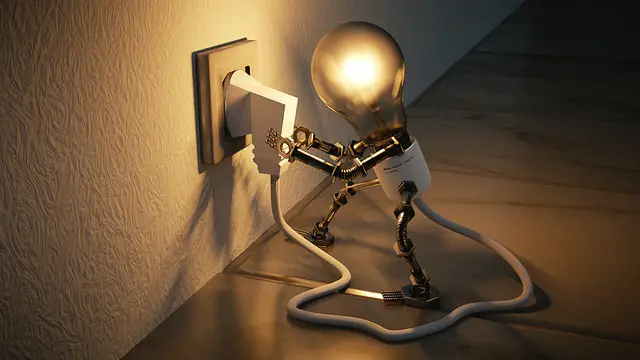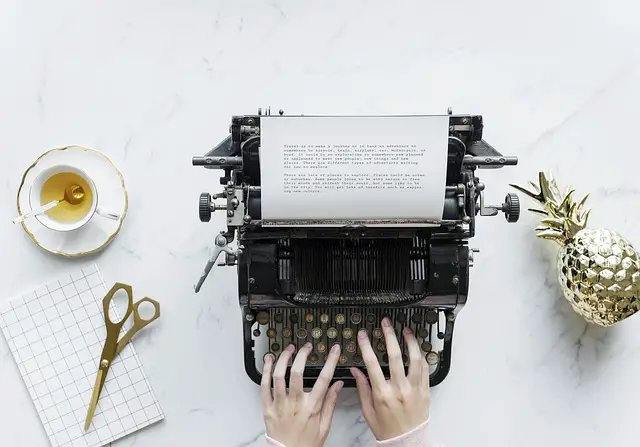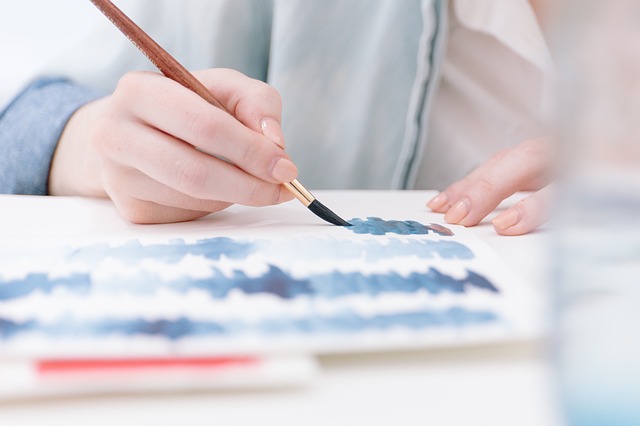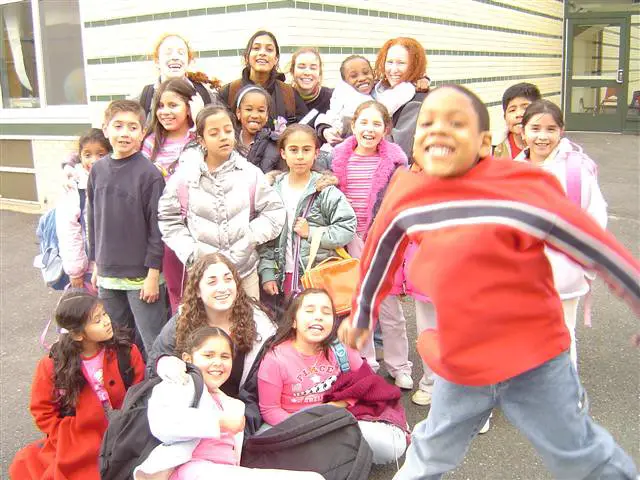There are good times and bad times when you do creative work in your personal or professional life– not to talk of weeks, months or even years. At times, you are full of inspiration, confidence, and you love what you do. However, on some other times, you feel the opposite way totally like uninspired, doubtful and disillusioned with your work.
When you’re experiencing one of these dry spells, it can get unbearable. You might see yourself hitting your head on a proverbial wall continuously. You might even get tempted to surrender your work during your darkest times.
During times like this, you have to find a way to continue going – and this is what the book is about. By diving into them, you will get to know different tips and methods for re-sparking your creativity when it reduces or vanishes, as well as the methods to keep the flame alive and get your creative fire burning.

1 – Create a routine to ensure that you show up for your work, irrespective of how creative you’re feeling.
Let’s begin with a healthy amount of realism. Irrespective of the number of tricks you put up your sleeve, you’re continuously going to encounter ups and downs in your creative work. You can support the ups and lessen downs; however, your creativity is going to ebb and flow. You can influence it; however, you can’t control it.
You can control whether or not you show up for your work, prepare to get the present of creativity that appears in your way, irrespective of its strength. It could be a mighty rush or a pitiful trickle, however, either way, you need to be present so that you can harness it the best way you can. Also, you need to continually do that daily, figuratively rain or shine. Nevertheless, there’s no chance of experiencing a good workday if you’re not doing any workdays at all!
In order to ensure that you show up for your work, there’s a time-tested answer that’s been the solution to a lot of creative people’s success and that is creating a daily routine. Yes, that signifies following a work schedule. However, it also signifies that you need to have particular routines and customs that put you in the mood to work.
There’s a lot of possibilities. Sylvia Plath wrote early in the morning before her children woke up from sleep. Franz Kafka wrote during the late-night after his family went to sleep. John Steinbeck sharpened a lot of pencils before settling down to write. Goethe smelled rotten apples to get his groove flowing. Anything that floats your boat!

Just know that: it’s your boat you have to float. There’s no one-size-fits-all solution here. Your routine has to be made to your certain needs, situations, and personality. What time do you have to do your work? Are you a night owl or maybe an early bird? What puts you in the mood? In creating your routine, these are the types of questions you’ll need to answer for yourself.
If you’re a person that is free-spirited creative-type, at first the creation of a routine might appear unpleasant. However, consider it this way: the reason for a routine isn’t to take your liberty away from you. In contrast, it’s to offer you the liberty to follow your creative passions. A routine offers you a steady period of time for creative work, secured from the busyness of the rest of your life.
2 – Disengage from disturbances in order to give yourself the time and space you need to do your creative work.
You need to create time and space to focus if you need to do creative work. However, in today’s hectic world, it can be difficult to get some peace and quiet.
In order to escape the pandemonium of the present world, you can follow the path of the writer and literary scholar Joseph Campbell, and form what he named as a Bliss Station. In its most solid form, a Bliss Station is a silent and quiet place where you visit to do your work –it may be a special room or a garage.
However, if you don’t have access to that type of place, you can create your own Bliss Station a time of day, instead of a certain location. For instance, during weekdays, perhaps there are a few hours when you’re at home alone. When everyone else is out, you can bliss out at your kitchen table.
If it’s a time or place, the main thing is to treat your Bliss Station as something sacred. No interruptions permitted. That signifies detaching from the interruptions of the present life. How can you do that? Here are two guidelines that apply not only to maintaining the sanctity of your Bliss Station, however, also to safeguard your creative time and energy in general.

Firstly, accept airplane mode – not only as a choice on your smartphone, however, also as a state of being. Consider it this way: when you’re on an airplane, you’re trapped in a closed surrounding and you have a lot of time, no social media or texts to accompany it. It makes it a perfect place to think and work. However, if you’re sitting on a train or you are in the waiting room, you can re-form the exact effect by putting in some earplugs and placing your phone on airplane mode.
During airplane mood, you’ll be blissfully unconscious of all the horrifying headlines that appear on news nowadays. That takes us to the second tip, which is to detach from the news for at least part of the day – particularly first thing during the morning. There are a lot more uplifting ways to begin your day like walking, reading, listening to music, playing with your kids and the list continues.
Remember, you can constantly rewatch the news later in the evening or on a chosen day of the week. By doing that, you can remain informed without feeling bummed out all the time.
3 – To improve your creativity, utilize the power of creating lists, tidying and sleeping.
In order to safeguard your creativity from the chaos of the present life, you’re now equipped with a Bliss Station and some healthy routines of interruption. In this chapter, we’ll unpack some other basic things you can do to provide some order to the disorder that surrounds you – and perhaps get some inspiration in the process!
The first thing is to create lists. There’s the common to-do list, however, there are a lot of possibilities. David Shrigley the visual artist has a list of the things he needs to draw; by doing that, when it’s time for him to work, he’s never at a loss for concepts of the next thing to draw. The writer Steven Johnson has a list of ideas to retort to someday, and he checks it for inspiration every couple of months. Also, the English rock band The Wire defined their artistic vision by listing things they wouldn’t do, for instance, things like solos, “rocking out” or ending songs on choruses.
The next tip is one that you’ve perhaps heard a lot about recently and that is tidying. Now, tidiness-guru Marie Kondo’s war on cutter, some untidiness in your place of work is acceptable. As a matter of fact, it can even be beneficial. In any case, creativity is mainly about creating unusual relations between distinct things. By leaving your work materials scattered all around the place, you might end up with some inspiring connections.
However, it gets to a point when a mess turns too messy. You know you’ve gotten there when you have a difficult time looking for the instrument you need to do your work. As a rule of thumb, your materials can be unwanted items, however, your tools need to be organized.

Having this limited objective in mind, tidying up can be a good back-up activity to do when you’re feeling choked. It’ll provide your body with something to do, which might relax your mind. Also, it might even trigger some inspiration. For instance, you might remember an uncompleted piece of work that offers you an idea. In order to open yourself up to this possibility, tidy up bit by bit and reflectively, considering each item you encounter.
Lastly, don’t only clean your space of work, tidy up your brain as well. How? It is easy: sleep! While you’re sleeping, your cerebrospinal fluid removes toxins from your brain cells. And you wake up, you’ll regularly see that your mind feels refreshed and also got new ideas.
By tapping into the power of a good nap, you’ll be connecting with a good company. Famous experts in the art of napping comprise of the Coen Brothers, Phillip Roth, and Salvador Dalí!
4 – In order to safeguard your creativity, avoid monetizing it completely or getting very obsessed with fame.
“Do what you love.”
A lot of us have internalized that frequently-repeated message, and it has turned into one of the key career aspirations of our time. If you haven’t gotten it already, picture getting a job where you are paid to follow your creative interests. Or picture being able to support yourself by selling your work online. To a lot of people, those cases seem like dreams come true.
However, truth be told, changing a passion into your key source of income is one of the easiest methods of changing it into something you hate. When your income is on the line, you’re no longer only doing your work for the joy of it; you’re also now doing it to have a place to stay. Also, that’s lots of pressure to put on your passion. It can turn out ruining the joy.
In order to prevent this trap, think of having a day job and following your creative work during your free time. If you still need to “do what you love” for a living, lessen the risk by fighting the temptation to change your whole creative yield into an income stream. Ensure that you’re continuously doing at least a little amount of creative work purely for the love of doing it.
However, money isn’t just the only external prize that can damage your passion. You can turn out to be just as narrowly focused on gathering followers, likes, shares, comments, website visits, and other online metrics. Also, the solution is to protect yourself. From time to time, disregard the metrics, at least for a little time. For instance, when you post your work on social media, wait for at least a week before you check the numbers of likes or comments you get.

Lastly, here’s an easy however a powerful approach to reconnect to your creativity on a pure level, uninfluenced by money or popularity and that is gifting. Do something creative only for the sake of gifting a gift to someone else once in a while, it can be a friend, family member or an online follower.
For instance, the author would make a robot collage from magazine cut-outs for his five-year-old son whenever he was feeling down about his work. Afterward, his son would also make a robot collage for him, and they’d continue making and passing robots. Up till now, those robots are still some of his most cherished creations.
You never know. A gift can turn out spreading across the world. A.A. Milne’s Winnie-the-Pooh, Astrid Lindgren’s Pippi Longstocking and J. R. R. Tolkien’s The Hobbit all started as stories the authors made for their children.
5 – Concentrate less on being a creative person and focus more on creating creative things, and drop the notion of “arriving.”
In the former chapter, we looked at concentrating less on covering what you do and more on just doing it. Now we’re going to consider the problem with the crucial measure of them all which is whether or not you’ve “arrived” as an “official” writer, painter, filmmaker or anything you’re hoping to be.
This is part of an unlucky trend to concentrate on the nouns, instead of the verbs of creative work. For instance, “sculptor,” “dancer,” and “singer” – all of these titles are nouns. The concrete activities of sculpting, dancing, and singing are the matching verbs.
It can be very counterproductive concentrating on being a creative noun instead of doing a creative verb. Let’s assume that your passion is painting. If you’re dedicated to being a painter, you might turn out waiting for someone to give that title to you before you begin serious painting– the very activity that would approve the title in the first instance!
However, the problems don’t finish there. Let’s assume that you are given your title, and now you see yourself as a painter. Well, what about writing or sculpting? Those aren’t something a painter would do. Hence, if you just consider yourself as being a painter, you might dodge writing or sculping. Due to this, you’ll limit your creativity.

Here is the crucial dilemma: even if all critics and colleagues in the world see you as an official, bona fide Painter with a capital-P (or anytime title you yearn form), you’re certainly not going to actually “arrive” as a creative person. This is because the journey of a creative life doesn’t go through a straight route, starting with a point A and finishing with a point B. It’s more of a continuous circle.
For example, let’s assume that you’re a writer. Each day you sit to write, you’re faced with the same basic task all the time: writing words on a blank page in front of you. Once you complete one piece of work, you’re always faced with the same question: What’s next?
That’s as true for the greatest well-known writers in the world as it is for the guy writing in obscurity in his basement. And it’s a reality that can never change. Irrespective of how experienced or successful you turn out to be, there will continuously be another blank page to write; the question is if you’ll show up to write it.
6 – To revive your creativity, connect with a feeling of playfulness.
Okay, so you have to concentrate more on the verbs and focus less on the nouns of your creative work. However, how do you really do this?
If you want to take a master class on the question, just observe some young children performing art. They’re natural-born experts regarding verbs over nouns. Not only do they barely care less about being an official artist, however, they regularly don’t even bother about the end product of their work!
An example of this case is the author’s son Jules. Jules loved to draw when he was two years old – stress on the verb, “draw.” He didn’t care about the end product, the drawing, which is eventually just another noun – a thing, instead of an action. After he finished drawing, his father could place it on the wall or throw it in the bin; to Jules, it was all the same.
Why the irrelevance? Art is a type of play for young children. And play is a thing we do for its own sake, instead of the sake of something else, like outcomes, money or commendation. These external considerations turn out to be beside the point when we are playing.
By changing them, we’re able to concentrate only on the present activity. And when we’re performing creative work, that shows that we’re capable of freely exploring our ideas, without being worried about what someone else might think or how “good” the outcomes might be.

This is the reason why a child-like sense of playfulness is one of the sources of creativity. Attempt making a piece of work to nurture this sense of playfulness– and then instantly damaging it! Is it digital? Erase it. Musical? Don’t record it. Physical? Throw it away or even burn it, if you’re feeling particularly dramatic!
The aim is to disconnect yourself from the outcomes. You can take this one step further and intentionally create a piece of work as bad as it can possibly be. Draw the ugliest drawing. Sing the most annoying song. Write the most boring poem.
Lastly, if you actually want to reconnect with your inner-child, attempt playing with some real children. You don’t have any? Change to one! For instance, just like the writer Lawrence Weschler, you could select a set of building blocks to play with anytime you want a creative escape. What better method to work through a mental block than some real, physical blocks?
7 – You don’t require an extraordinary life to perform extraordinary creative work.
Visualize if you could mysteriously change your life ten times cooler than it is presently. Your neighborhood, your home, your workplace, your friends –all the components of your everyday reality has been suddenly upgraded.
If you can live such a life, do you consider that it would change your creativity to the next phase? Do you consider the ordinariness of your current reality as the key thing refraining you? A lot of people fall into this trap. They assume that if only their conditions were more extraordinary, their creative work would be more extraordinary as well – as if the one is reliant on the other.
However, there are a lot of great artists whose boring lives offer living proof that you can do extraordinary work even in the most unexceptional situations. Not just that; however, you can use those very conditions for your creative material – discovering the magical features buried inside the ordinary parts of daily life.
Harvey Pekar the comic book writer offers an instance in point. He spent the majority of his adulthood working at a hospital in Cleveland, Ohio as a file clerk. However, he wasn’t only able to write incredible comic books in spite of his lackluster job; he also made use of that job as his source material for his books, gathering stories about his workplace experiences.
Anywhere you see yourself, there’s magic if you find it–however, by the same token, you have to really find it in order to see it. And that means paying rapt attention to the world that surrounds you. By doing that, you can see the special little information that people would normally ignore.

Unfortunately, present life inspires us to spend the majority of our time rushing around, practically unaware of our environments. Here’s an easy exercise you can do in order to get into the routine of slowing down and concentration on them.
Get a pencil and a sketchpad, sit down and draw anything at an art museum or in your close surroundings. Take time and study your subject carefully. The art critic Peter Clothier recommends using a whole hour just looking at your subject, before using another hour to draw it. You don’t need to go that far, the aim is to actually slow down.
Therefore, don’t be stressed if you’re not “good” at drawing. This practice is for anyone. Nevertheless, the goal isn’t to make a beautiful picture but to simply exercise your observation skills.
8 – If your creative work is letting you or other people miserable, it is probably the time for you to leave it.
When you realize that you’re doing something that’s letting you or the people that surround you miserable, what do you have to do? The solution is obvious in your personal life: reassess your deeds and attempt to change it for the better.
That’s just as true of creative work, in spite of an unfortunately famous myth to the contrary. Name it the myth of the tortured artist. According to this myth, if you create great art, it somehow rewards excuses or even demands unhappiness. You can become addicted or become a full jerk to your family – it doesn’t matter providing that your work is great. The darkness in your life can certainly even be a good thing for your creativity; it offers you some demons to fight with.
However, aside from being a dubious approach of thinking about morality, it is also a completely wrongheaded method of looking at our creative work. Eventually, the idea of that work is to ensure that our lives become better. Nevertheless, if it’s not increasing the whole happiness present in our lives, what’s the need for doing it?
To put the point in a different approach, our creative work is something that’s meant to assist our lives and not the other way around. If you’re sacrificing other people’s happiness or your own happiness on the altar of creativity, you’re getting the entire aim of it backward. Therefore, it’s time to do some severe reassessment.

You should know that you don’t need to do creative work. There are a lot of other valuable things you could do with your life from volunteering at a soup kitchen to tutoring kids in math. If it turns to a cause of misery, perhaps you should leave your work and attempt one of these options, at least for a spell. The essential message of these chapters is that you shouldn’t “continue going” if where you’re heading to is down a hole – particularly if you’re taking other people down with you.
Now, if you’re only battling through a rough patch and your creative work is regularly a place of joy, then, by every means, please continue going. Hopefully, the tips you’ve gained in these chapters will help you out. Remember that the world wants another good friend, parent, mentor, citizen and generally human being much more than it needs yet another tortured artist.
Take care of yourself and the people that surround you, and continue going toward the light, wherever it might be.
Keep Going: 10 Ways to Stay Creative in Good Times and Bad by Austin Kleon Book Review
Our creativity will continuously ebb and flow, however, there are a lot of things we can do to recover, protect and support it. Creating a routine, detaching from disruptions and creating lists can help us concentrate on our work, ensure that we show up for it and offer us some path with it. We can find inspiration by tidying up our place of work, sleeping and stopping to listen to our environments. Also, gifting our work, avoiding obsessions with money as well as popularity, and reconnecting with a sense of playfulness can enable us to remember the vital drive of creativity, which is to enable our lives to get better.
Take a walk.
When you’re trapped on something or feeling low about work, your life or the world as a whole, there are little things that can assist you clear your head, get some perception and revive your spirits better than a good walk. By eliminating yourself from the screens and busyness that take over present life, and by taking yourself outside and moving at an easy pace, you’re providing yourself a firm block of time to think through your difficulties, reconnect to your senses and notice all the good things that are still occurring in the universe.
Even though your mind is disturbed and the headlines are dreadful, the birds still sing and the clouds still roll overhead. While appreciating their company, you’ll be following the paths of Henry David Thoreau, Friedrich Nietzsche, Wallace Stevens Charles Dickens, Ludvig van Beethoven, Bob Dylan and a lot of other creative thinkers and artists who have recognized and admired the value of a nice walk.
Download Pdf
https://goodbooksummary.s3.us-east-2.amazonaws.com/Keep+Going+by+Austin+Kleon+Book+Summary.pdf
Download Epub
https://goodbooksummary.s3.us-east-2.amazonaws.com/Keep+Going+by+Austin+Kleon+Book+Summary.epub
